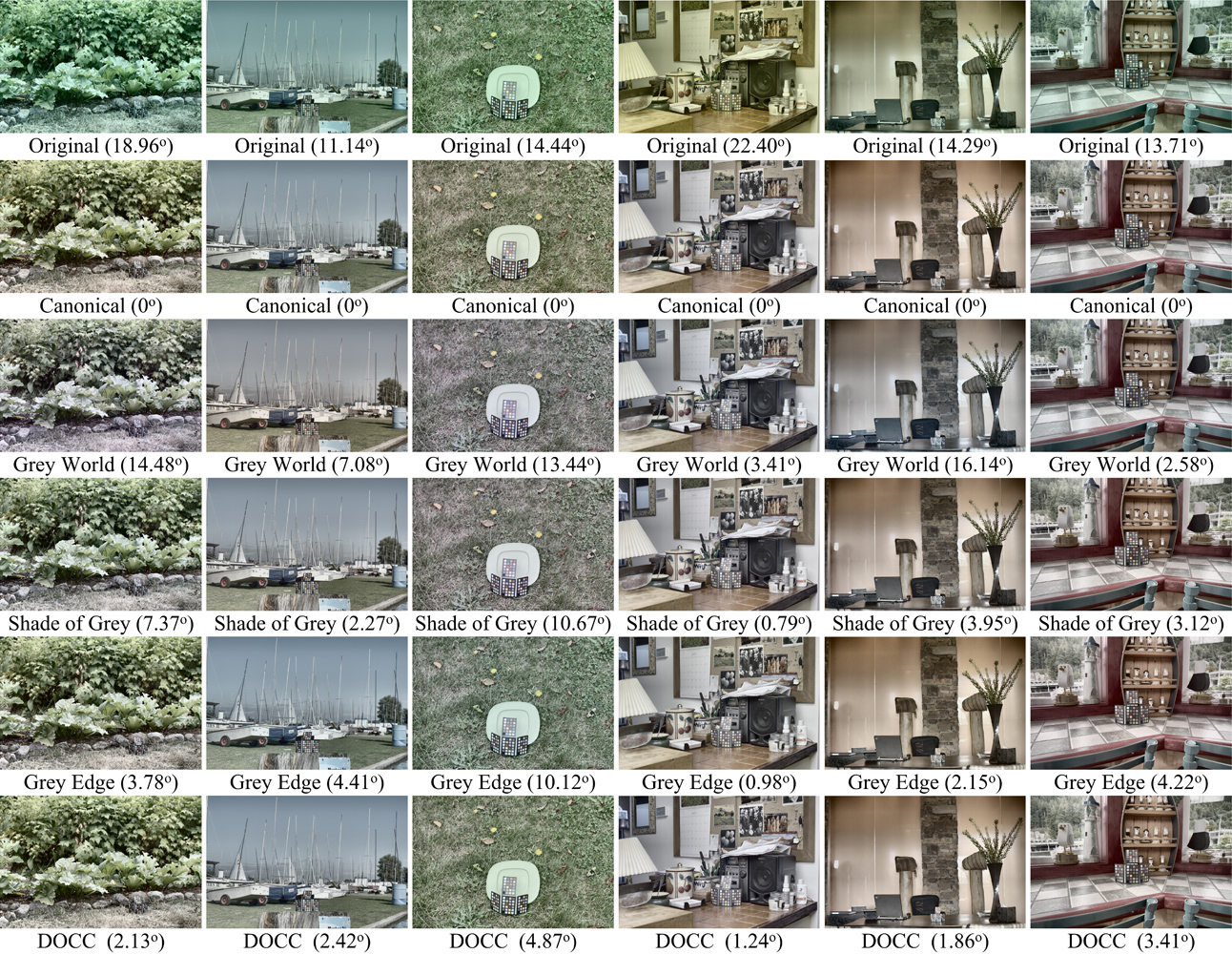Color Constancy Using Double-Opponency
Shaobing Gao, Kaifu Yang, Chaoyi Li, Yongjie Li*
University of Electronic Science and Technology of China
Shanghai Institutes for Biological Sciences, CAS
Abstract
The double-opponent (DO) color-sensitive cells in the primary visual cortex (V1) of the human visual system (HVS) have long been recognized as the physiological basis of color constancy. In this work we propose a new color constancy model by imitating the functional properties of the HVS from the single-opponent (SO) cells in retina to the DO cells in V1 and the possible neurons in higher visual cortexes. The idea behind the proposed double-opponency based color constancy (DOCC) model originates from the substantial observation that the color distribution of the responses of DO cells to the color-biased images coincides well with the vector denoting the light source color. Then the illuminant color is easily estimated by pooling the responses of DO cells in separate channels in LMS space with the pooling mechanism of sum or max. Extensive evaluations on three commonly used datasets, including with the dataset dependent optimal parameters, as well as the intra- and inter-dataset cross validation, show that our physiologically inspired DOCC model can produce quite competitive results in comparison to the state-of-the-art approaches, but with a relative simple implementation and without the need for explicit training.
Results
Some examples of indoor and outdoor images from SFU HDR dataset corrected with mutiple methods.Those HDR images are firstly processed by color constancy algorithms and then re-rendered by tone mapping for display

The influence of receptive field size (σ) and the cone weight (k) of our model (DOCC-LMS(sum)) on the measure of median angular error. Left: Gehler-Shi dataset, middle: SFU lab dataset, right: SFU HDR dataset.For experimental evaluation, in this study we respectively set k = 1.0, 1.0, 1.0 and σ = 0.5, 1.5, 8.0 for Gehler-Shi dataset, SFU lab dataset, and SFU HDR dataset.
Citation & Download
- Shaobing Gao, Kaifu Yang, Chaoyi Li, Yongjie Li*.Color Constancy Using Double-Opponency. IEEE Transactions on Pattern Analysis and Machine Intelligence, 37(10): 1973-1985,2015.[pdf] [published link].
- Shaobing Gao, Kaifu Yang, Chaoyi Li, Yongjie Li*. A Color Constancy Model with Double-Opponent Mechanisms. Proceeding of IEEE International Conference on Computer Vision (ICCV), pp.929-936, 2013. (Oral, acceptance rate: 2.52%) [pdf] [supp.info.] [bib] [published link] [中文版]
DOCC code: Codes Download
we experimentally evaluated our DOCC algorithm on Color Checker, SFUlab and SFU HDR datasets by setting parameter k=0.1:0.1:1.0 and sigma=0.5:0.5:8.0, respectively. The real illuminant and results of proposed methods are avilable:
Color Checker (Gehler-Shi) dataset
SFUlab dataset
SFU HDR dataset
Reference:
- A. Gijsenij, T. Gevers, and J. Van De Weijer, "Computationalcolor constancy: Survey and experiments," IEEE TIP, vol. 20,no. 9, pp. 2475–2489, 2011.
- J. Van De Weijer, T. Gevers, and A. Gijsenij, "Edge-based color constancy," IEEE TIP, vol. 16, no. 9, pp. 2207–2214, 2007.
- B. R. Conway, "Color vision, cones, and color-coding in the cortex," The neuroscientist, vol. 15, no. 3, pp. 274–290, 2009.
- R. Shapley and M. J. Hawken, "Color in the cortex: single-and double-opponent cells," Vision research, vol. 51, no. 7, pp.701–717, 2011.
